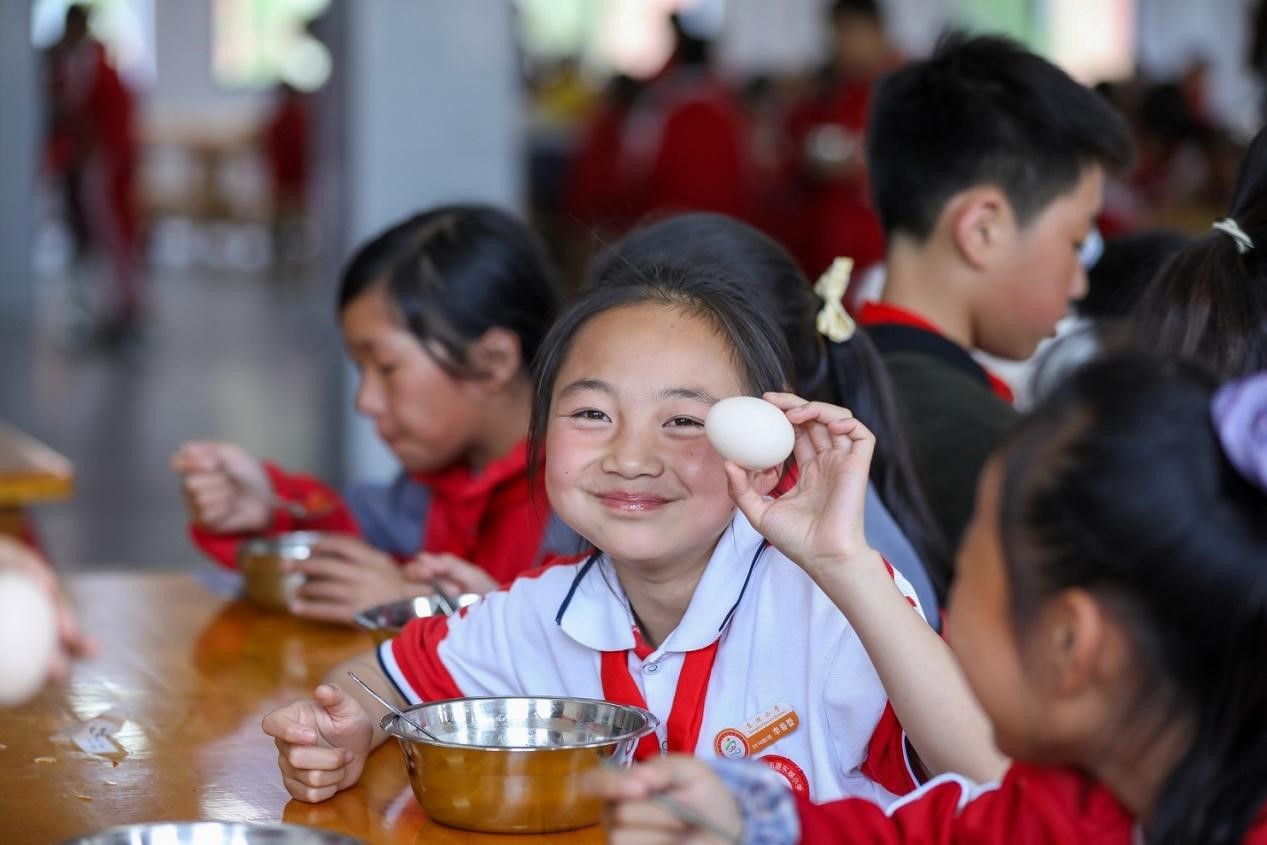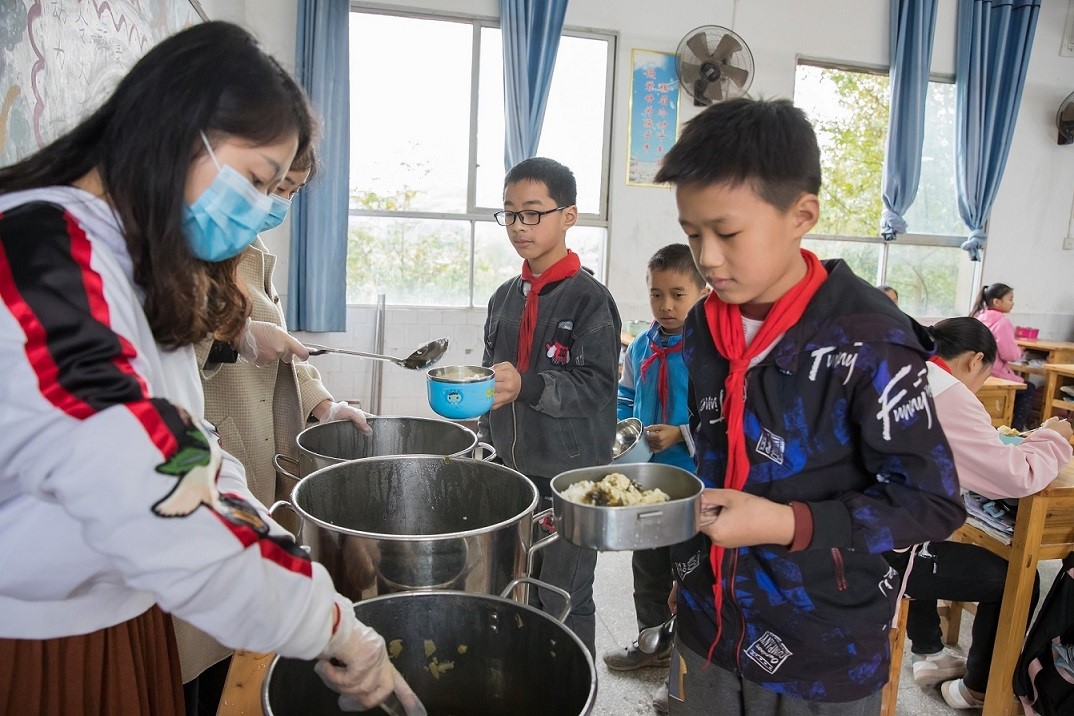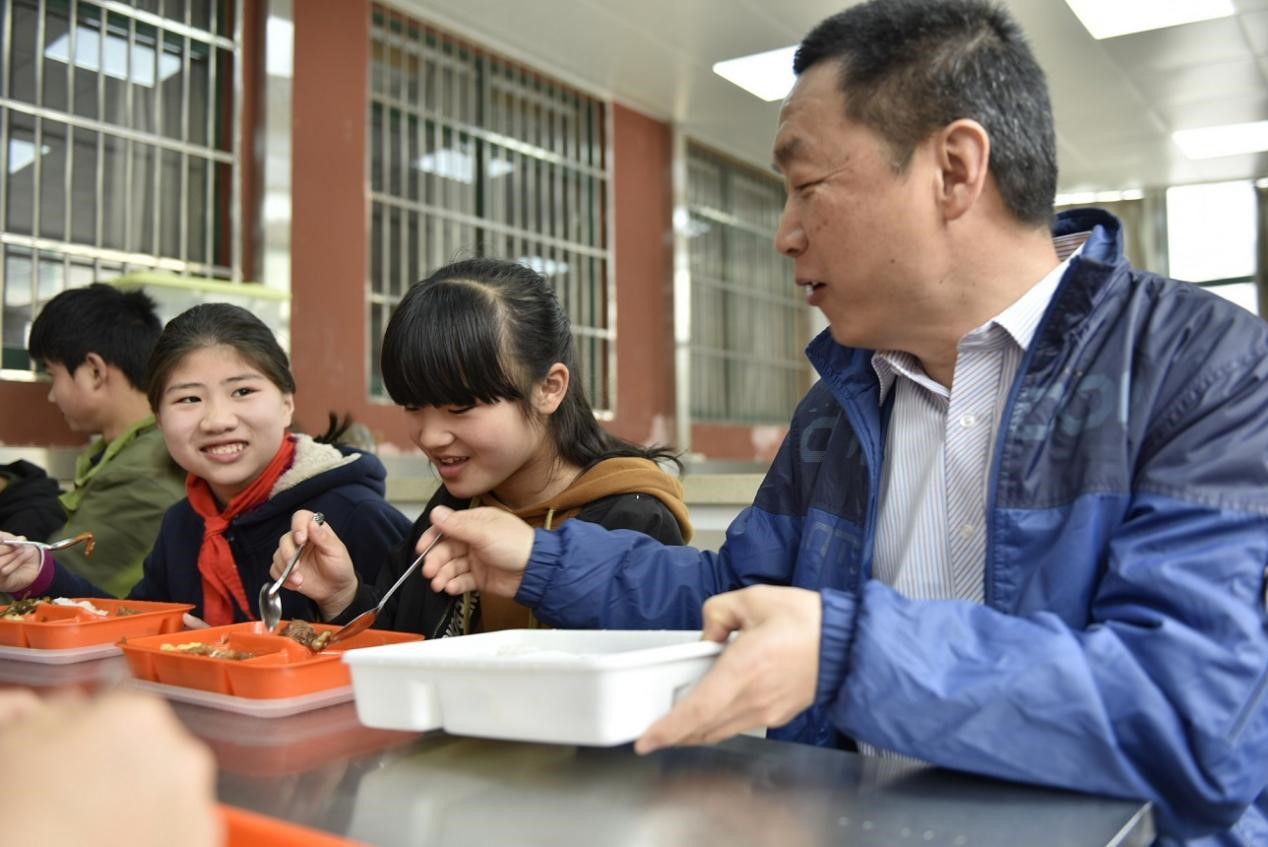Nutrition improvement program for rural students in compulsory education benefits 350 million Chinese students
Students have grown taller and stronger since the nutrition improvement program for rural students in compulsory education was launched, said Li Ming, principal of an elementary school in Xiji county, Guyuan, northwest China's Ningxia Hui autonomous region.

Students are having meals at a primary school at a relocation site for poverty alleviation in Kaiyang county, Guiyang, southwest China's Guizhou province, May 2022. The county offers free meals for students. Each meal includes three dishes and a bowl of soup, as well as a fruit or a cup of milk. (People's Daily Online/Yuan Fuhong)
The program offers students a nutritious and delicious lunch at school, and has put an end to the days when some students had to go back home kilometers away for lunch, the principal noted.
As of the end of 2021, the nutrition improvement program for rural students in compulsory education has benefited a total of 350 million students.
According to the Chinese Center for Disease Control and Prevention, the average heights of male and female students in the regions where the program is implemented have increased 4.2 centimeters and 4.1 centimeters from 2012 to 2021, and the weight increases were 3.5 kilograms and 3.3 kilograms, respectively. These figures all outnumbered the average among all rural students across the country.
Only 2.5 percent of rural students in central and western China suffered delayed growth in 2021, 5.5 percentage points lower than the number in 2012, the center said.

All 245 students in Sanxi Primary School in Dianjiang county, southwest China's Chongqing municipality can have free lunch at school, thanks to the nutrition improvement program for rural students in compulsory education. (People's Daily Online/Sun Kaifang)
Apart from the rising subsidizing standard and meal quality, the program also encourages schools in pilot areas to build better cafeterias. As of the end of 2021, 76 percent of the schools supplied food under the program to the students at school cafeterias, and the number was nearly 90 percent among schools in national-level pilot counties.
Improving work mechanisms and ensuring food safety are the top priorities. Qiubei county, Wenshan Zhuang and Miao autonomous prefecture, southwest China's Yunnan province, has launched a digital cafeteria management platform to provide better food to the students.
The platform is joined by the local education and sports bureau, schools and food suppliers. It monitors all procedures, including the verification of suppliers' certificates, purchasing, food safety and financial management.
Today, local authorities in Yunnan province are working to build whole-process online monitoring and management systems, employing electronic scales, facial recognition, pesticide residue monitoring devices, the Internet of Things and big data, for more targeted management of the nutrition improvement program.
Science popularization activities have been launched across China over recent years to improve the public's knowledge of nutritional science and guide teachers and students to develop science-based dietary habits.

The party head of a primary school in Shushan district, Hefei, east China's Anhui province has a meal together with students, March 2019. The primary school invites students' parents to "test" meals supplied at school to ensure food safety. (People's Daily Online/Ge Yinian)
By launching training courses on the nutrition improvement program and developing an electronic dietitian system, the Ministry of Education and the National Health Commission have effectively improved primary-level personnel's capability in making nutrition diets.
The nutrition improvement program for rural students in compulsory education has been applauded by the international community. According to a survey launched by the World Food Programme in 169 countries, China is one of the few countries in the world that provides nutritional meals for both middle school and primary school students, and ranks among the best in terms of supply volume.
The nutrition improvement program has played a significant role in promoting educational fairness, advancing poverty reduction and implementing the rural vitalization strategy, and has laid a solid foundation for improving Chinese people's health, strengthening education and advancing the Healthy China Initiative.
Photos
Related Stories
Copyright © 2022 People's Daily Online. All Rights Reserved.









